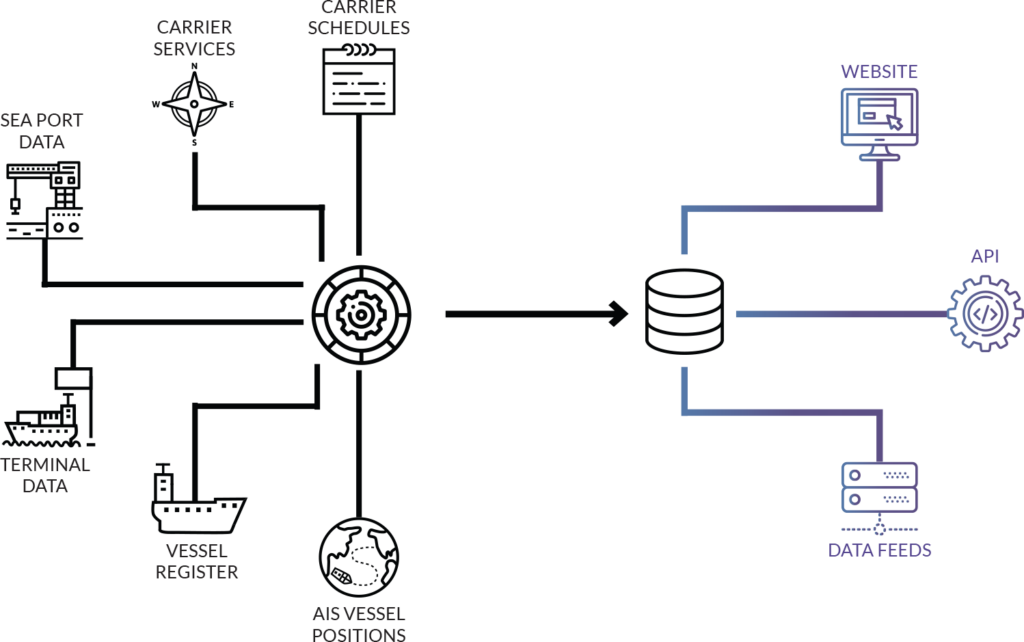Linescape processes much more than just sailing schedules. Although carrier schedules form the foundation of our database, they must be enhanced and validated with other sources of data. Carrier services (or routes) are analyzed in order to correctly attribute vessel schedules to a particular service. Sea port data is gathered to avoid confusing similar port names, mapping vessel port calls to the correct ports. Terminal data is imported to determine the identity of the terminal where a vessel will berth. Vessel register data is used to provide current vessel identifiers, such as IMO, MMSI, Call Sign, Flag, Operator, Ship Type, TEU, etc… Finally, we receive AIS data to track the ETA and ETD of vessels at each port worldwide. This data allows us to check and validate the accuracy of vessel schedules as well as to calculate on-time reliability.
Our Process

All data is imported and processed on secure bare-metal servers under our complete control and with a redundancy of backups. Several times each day, the most recent portion of the validated database is pushed to the cloud where it can be accessed either by the Linescape website or the API for customer access which is flexible and scalable. Data feeds are likewise generated and pushed to a secure FTP server where customers can pull their data feeds daily. Furthermore, we maintain all historical data which can be made available to certain customers for analysis or used for data mining.
Linescape’s proprietary platform functions seamlessly, automatically and securely with near 100% uptime, providing customers with a totally reliable source of sailing schedule data.